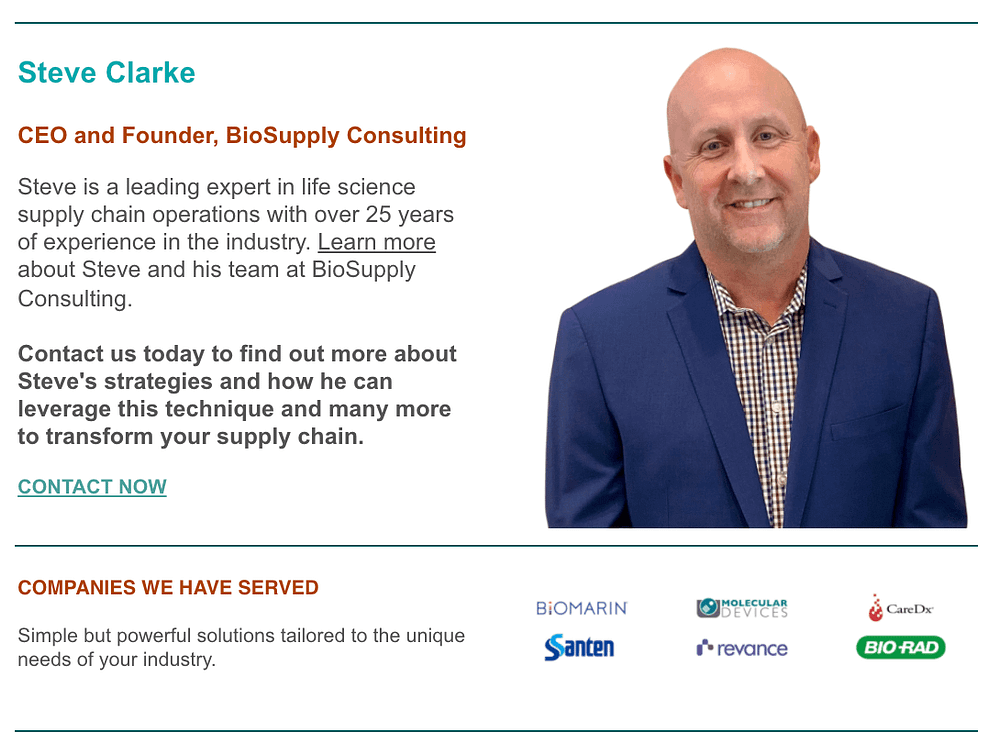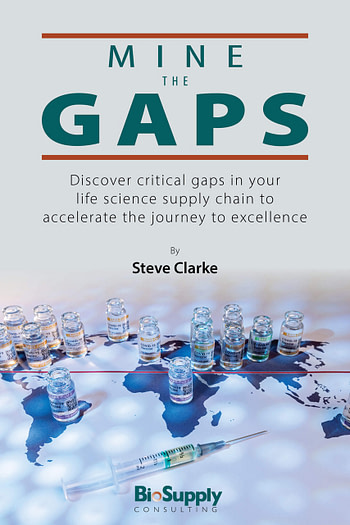LIFE SCIENCE SUPPLY CHAIN SOLUTIONS BY STEVE CLARKE
Challenge
It seems that we are in a new normal, with the continual threat of material shortages! If you want to avoid permanent sleepless nights, your organization must get it’s act together regarding planning and scheduling. This obviously means different things to different organizations. However, from 25+ years running life science supply chains and teaching APICS supply chain certification classes for most of that time, I can share some commonalities from all that experience. So where should you start?
Solution
Firstly, start with the end in mind. Select metrics that will measure your starting point, target destination and progress along the route. For example, on time shipment is a typical metric to assess the impact of your material shortages. Note that a “balancing” metric should also be selected to avoid “cheating”. In this case, it would be tempting to improve on-time shipments by simply hoarding more and more inventory. The idea is to improve results without tying up lots of cash, especially in life sciences where materials often have limited shelf-life. This can only be achieved in one way: process improvement. In the short term it may be necessary to increase inventory on selected items to “stop the bleeding”, but increasing inventory is not a winning long-term strategy. There are several steps to sustainably reduce supply risk, but I will only cover where to start in this article.
Here are the first 2 key steps: 1. Find your “A” items (20% items/80% demand risk) and ensure that you have line of sight (LOS) for these items for the next 3 months. The criteria for A items could include $ usage, revenue impact, single versus sole sourced, long lead times and custom item versus off-the-shelf. LOS means that your inventory on hand and purchase commitments comfortably cover the next 3 months supply. For these high-risk items, I would make sure the inventory has been counted, and you have a strong comfort level that the supplier will deliver. 2. You will very likely have some items for which you do not yet have LOS. These items must be tracked carefully, and escalated as soon as possible, if there is serious supply risk. The revenue risk can be measured for each item, based upon where the part is used. Bringing clarity to the supply risks and managing them closely is a great first step towards short term improvements. This is the triage phase, and in a future article, I’ll discuss the next steps.
Testimonial
“Vast knowledge of ERP, Process Improvement, Inventory Control.”
~Siva Samidurai, Associate Director, Supply Chain Systems)
Results
At one life science client that wished to transform its supply chain, we immediately performed a risk analysis, and increased safety stocks on the riskiest items. In addition, since inventory accuracy was low, we took steps to improve the accuracy, to minimize supply risk. This first meant redesigning the warehouse layout to increase rack storage capacity, so the warehouse was better organized and easier to find items. Next, we developed a simple Excel tool to track part shortages and their impact on quarter end revenue attainment. This meant that we could focus our attention on the riskiest items. Weekly cross-functional meetings were held to align on next steps. In addition, for each part shortage, the underlying reason was discussed and agreed to. The focus is always on the business process that needs improvement to prevent future similar issues which helped build the roadmap. It will take some time for the results to become more clear, but judging from the reaction of the team and senior management, they can see that the improvements are beginning to pay off, and we are all confident that the needle will quickly move in the right direction. I will provide an update in a few weeks to let you know how the journey is progressing and to discuss the next steps.



